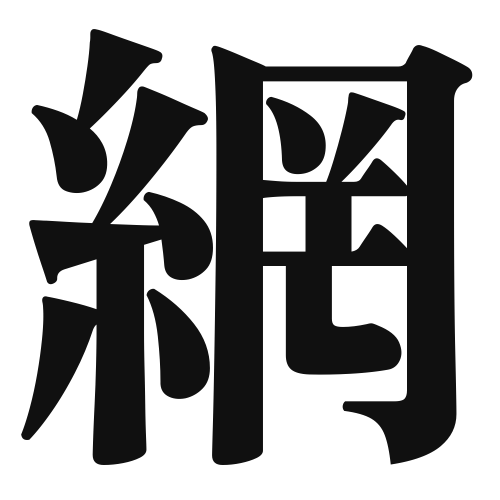1. Overview of Meaning
The kanji “網” (pronounced “ami”) means “net” or “mesh.” It refers to a structure made of interwoven materials, often used for catching fish or other items. It can also symbolize connections or networks in a broader sense.
2. Formation and Radical
The kanji “網” is a compound character (会意文字) that combines two elements: the radical “網” (which means “net”) and the character “罒” (which represents a net or web). The radical itself is a visual representation of a net, emphasizing the concept of interconnection.
3. Examples of Usage
Common words and phrases that include “網” are:
- 網戸 (あみど, “screen door”)
- 網漁 (あみりょう, “net fishing”)
Example sentence in daily conversation:
「魚を捕まえるために網を使います。」(I use a net to catch fish.)
4. Synonyms and Antonyms
Similar kanji with related meanings include:
- 網 (あみ, “net”) – refers specifically to a net structure.
- 織 (おり, “weave”) – focuses on the act of weaving materials together.
Antonyms include:
- 壊 (こわす, “break”) – which implies destruction or disconnection.
5. Cultural and Historical Background
The kanji “網” has significant ties to Japanese culture, particularly in fishing communities where nets are essential for livelihood. It appears in various proverbs and idiomatic expressions, such as:
- 「網の目のように」(Like the mesh of a net) – used to describe something that is interconnected.
This reflects the importance of networks and connections in both social and professional contexts in Japan.
